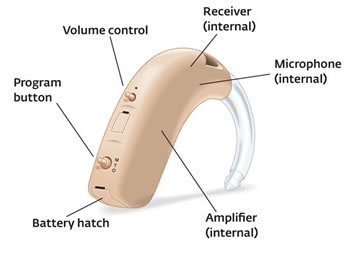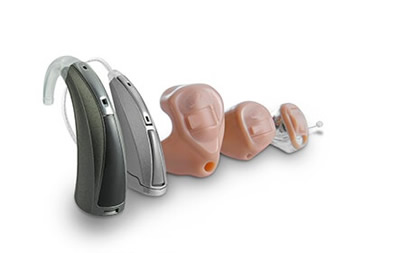Difference between Analog and Digital Hearing Aids
Key Difference: Analog hearing aids do the basic task of taking a sound and amplifying it into the speaker that is placed in the ear. Digital hearing aids take the process a step further by taking the sound, cleaning it up for background noise and then amplifying it through the speaker.
 Hearing aids are a life-saver for the many people who suffer from hearing impairments. They help amplify the sounds in the environment so that people could hear along the same pitch without requiring the noise to be turned up too loud. Hearing aid technology has grown and improved as the years have gone by. We have gone from having to carry around a bulky unit on your waist, to virtually requiring nothing more than a set of in-ear aids. However, the main question a lot of people come across when it comes to discussing hearing aids is which one is better, analog or digital?
Hearing aids are a life-saver for the many people who suffer from hearing impairments. They help amplify the sounds in the environment so that people could hear along the same pitch without requiring the noise to be turned up too loud. Hearing aid technology has grown and improved as the years have gone by. We have gone from having to carry around a bulky unit on your waist, to virtually requiring nothing more than a set of in-ear aids. However, the main question a lot of people come across when it comes to discussing hearing aids is which one is better, analog or digital?
Before we answer that question, let’s take a look at hearing aids in general. The main motive of a hearing aid is to take in the noise from the environment using a microphone and amplify it into the speaker. However, hearing aids differ from each other by design, technology and special features. Some hearing aids are molded or are just earpieces, some have sensors placed on the back of ear, but the different types depend on the severity of hearing loss, lifestyle and listening needs.
Now, there are two main types of technologies that we see in hearing aids – analog and digital. The main difference between the two is the type of technology and the advancement of technology that is used. Analog hearing aids were the first hearing aids that were introduced, they included a microphone, an amplifier and a speaker. This type of hearing aid would simply absorb the sound from the microphone, amplify it and then play it through the speaker. These were the main type of hearing aids you would get a few years back, but today these are going out of fashion for more advance hearing aids. While they are still widely available, doctors now recommend digital hearing aids because of the benefits that it provides.
 Digital hearing aids include a special Digital Signal Processor, or a DSP, which takes in noise and cleans it up. It also automatically manipulates the noise and sound according to the environment before it plays it through the speaker. More advanced chips can also change the output based on the different environment automatically, so if the person walks outside from a closed and quiet space, the aids would automatically adjust the volume on the aid. These are growing in popularity because it makes the individual a bit more hands-free and less dependent having to constantly change the settings on the hearing aid. More high-end digital hearing aids offer even more different features, which users can choose to add on if they wish.
Digital hearing aids include a special Digital Signal Processor, or a DSP, which takes in noise and cleans it up. It also automatically manipulates the noise and sound according to the environment before it plays it through the speaker. More advanced chips can also change the output based on the different environment automatically, so if the person walks outside from a closed and quiet space, the aids would automatically adjust the volume on the aid. These are growing in popularity because it makes the individual a bit more hands-free and less dependent having to constantly change the settings on the hearing aid. More high-end digital hearing aids offer even more different features, which users can choose to add on if they wish.
So, depending on your needs and want, a person can opt for either analog or digital hearing aids. Analogs are easier to understand and set up, making it ideal for people who are less tech savvy, while digital hearing aids offer more freedom and can directly be integrated into people’s lives. The end goal of both is the same, helping people with hearing impairments hear better.
Comparison between Analog and Digital Hearing Aids:
|
|
Analog Hearing Aids |
Digital Hearing Aids |
|
Definition |
Analog hearing aids do the basic task of taking a sound and amplifying it into the speaker that is placed in the ear |
Digital hearing aids take the process a step further by taking the sound, cleaning it up for background noise and then amplifying it through the speaker |
|
How it works |
These types of hearing aids use a simple microphone and speaker system. It picks up the sound, amplifies it and then plays it through the speaker |
These type of hearing aids use a bit more complicated system, where the noise is picked up and processed through a digital signal processor or a DSP that manipulates the sound and provides a higher quality output |
|
Benefits |
|
|
|
Usability |
Is slowly becoming obsolete as newer technology is introduced |
Is newer and is now more commonly recommended by doctors |
Reference: FDA, Audio Recovery, Audicus Image Courtesy: floridamedicalhearing.com, hearingreviews.com









Add new comment